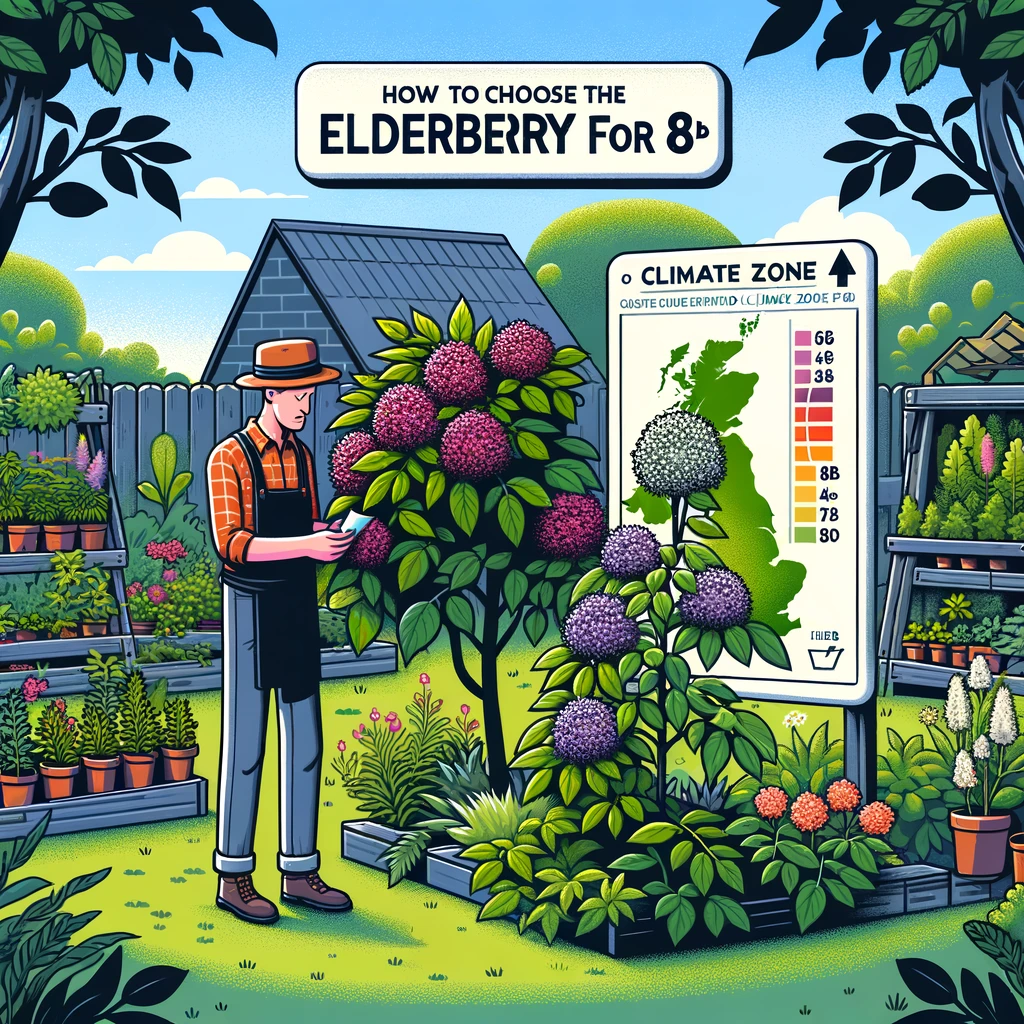Choosing the right elderberry variety for your garden, especially in the unique climate conditions of zone 8b, can be both exciting and challenging. In this guide, “How to Choose the Best Elderberry For 8b,” we delve into the key factors that make certain elderberry species thrive in this specific environment. From understanding the distinct weather patterns of zone 8b to selecting varieties best suited for its temperature range and soil conditions, we provide insightful tips and expert advice. Whether you’re a seasoned gardener or a novice looking to add these versatile and beneficial plants to your garden, this guide will equip you with all the necessary knowledge to make informed decisions and enjoy a bountiful elderberry harvest.
Understanding Zone 8b’s Unique Climate
In the first step towards selecting the best elderberry for your garden, it’s crucial to understand the distinctive climate characteristics of zone 8b. This zone is known for its mild winters and long, warm summers, creating a specific set of challenges and opportunities for plant growth. The average minimum winter temperature typically ranges from 15 to 20 degrees Fahrenheit, which means that your elderberry plants need to be hardy enough to withstand these conditions. Additionally, the extended warm periods require varieties that can tolerate and even thrive in higher temperatures. By comprehending these climatic nuances, gardeners can narrow down their choices to elderberry species that are best adapted to these conditions.
Selecting the Right Elderberry Varieties
Once you’re familiar with the climate of zone 8b, the next step is to select the appropriate elderberry varieties. Not all elderberry species are created equal, and some are better suited for certain climates than others. For zone 8b, look for varieties that are known for their heat tolerance and ability to withstand mild winters. Some popular choices include the American Elderberry (Sambucus canadensis) and the European Elderberry (Sambucus nigra). These varieties not only adapt well to the temperatures of zone 8b but also offer high yields and robust flavors, making them excellent choices for both culinary and medicinal uses.
Planting and Care Tips for Optimal Growth
After selecting the suitable elderberry varieties, the focus shifts to planting and care. Elderberries in zone 8b benefit from well-drained, fertile soil and plenty of sunlight. Planting should ideally be done in early spring, allowing the plants to establish themselves before the peak summer heat. Regular watering, especially during dry spells, is crucial for young plants. Additionally, elderberries in zone 8b may require some pruning to encourage new growth and prevent over-crowding. With the right care, these plants can become a resilient and productive part of your garden, offering bountiful harvests year after year.
Tackling Pests and Disease in Zone 8b
A vital aspect of growing elderberries in zone 8b involves managing potential pests and diseases that could impact the health and yield of your plants. In this region, common challenges include aphids, spider mites, and elderberry borers. Additionally, fungal diseases like powdery mildew and root rot can occur, particularly in areas with high humidity or poor drainage. To combat these issues, it’s essential to implement an integrated pest management strategy. This includes choosing disease-resistant varieties, maintaining proper spacing for air circulation, and employing natural pest control methods. Regular monitoring of your elderberry bushes will also enable early detection and treatment of any problems, ensuring your plants remain healthy and productive. By being proactive about pest and disease control, you can enjoy a thriving elderberry garden in zone 8b.


